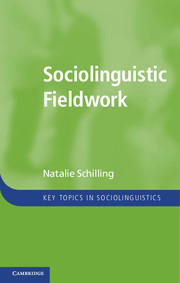6 - Recording and record-keeping
Published online by Cambridge University Press: 05 April 2013
Summary
There are many steps that lead up to recording language data as part of your sociolinguistic study – conceptualizing and designing the study, conducting background research on and ethnographic observation of the community, making your initial entry into the community, and, finally, getting people to agree to participate in your study. At this point, after going through all the time and effort to set things up so that you can now begin making permanent records of language and communication in your community of study, you need to be confident about making excellent recordings. There are few things more disappointing than returning from a sociolinguistic interview, especially one that seemed to go really well, only to realize that you cannot use it because the sound quality is too poor – or even worse, that you failed to record anything at all. To ensure that this does not happen to you, the first half of this chapter is devoted to a discussion of the technical specifications for recording equipment (based on the unchanging physics of speech, not passing fads in technology) and a summary of recording techniques that have been proven to yield high-quality recordings in the field environment. In the second part of the chapter, we discuss how to organize and store your data and information about your data (metadata) in such a way that you can readily find what you need and analyze it efficiently. Finally, we address issues of data security and privacy protection.
Because this book is focused on sociolinguistic field methods for variationists, Section 6.1 focuses primarily on equipment and techniques for audio recording sociolinguistic interviews. However, we also briefly touch on recording for sociolinguistic surveys via telephone or the Internet, recording stimuli for language attitude and perception tests, recording peer interactions set up by the researcher but with no interviewer present, and recording naturally occurring interactions, including recordings made by the researcher and those made by participants themselves as they go about the course of their daily lives. We will also briefly discuss video recording, though in-depth discussion of specifications and techniques for video recording are beyond the scope of this book.
- Type
- Chapter
- Information
- Sociolinguistic Fieldwork , pp. 216 - 267Publisher: Cambridge University PressPrint publication year: 2013



